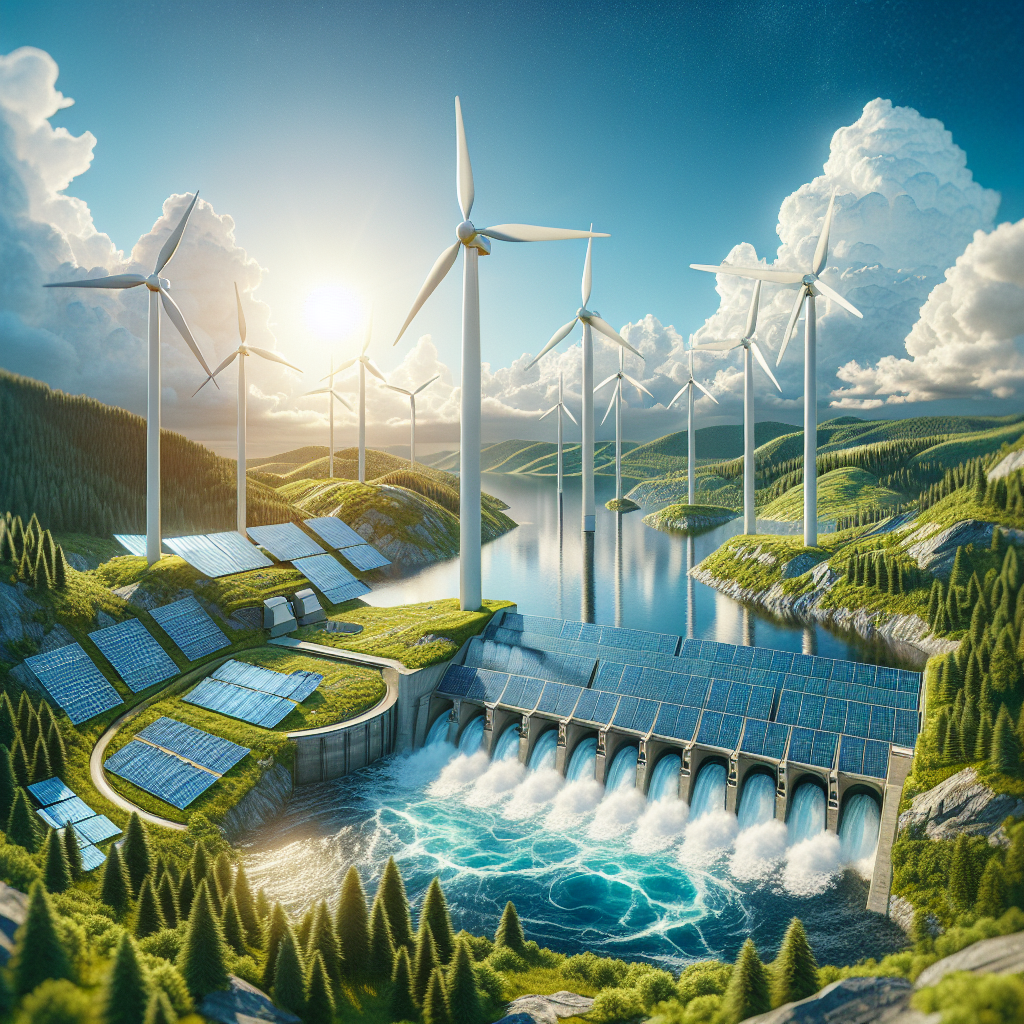Investing in Renewable Energy: Economic Benefits and Challenges
As the world grapples with the realities of climate change, the shift towards renewable energy sources has become more than just a trend—it’s a necessity. Investing in renewable energy not only promises environmental benefits but also presents a plethora of economic advantages and challenges. This article delves into the economic benefits and challenges associated with investing in renewable energy.
Economic Benefits
1. Job Creation
The renewable energy sector is a significant job creator. According to the International Renewable Energy Agency (IRENA), the renewable energy industry employed around 11.5 million people globally in 2019. Jobs in this sector range from construction and installation to research and development, offering opportunities across various skill levels. As investment grows, so does the potential for job creation, stimulating economic growth.
2. Energy Independence
Investing in renewable energy reduces dependence on imported fossil fuels. Countries that rely heavily on oil, gas, and coal imports are vulnerable to volatile global energy markets. By developing domestic renewable energy sources, nations can achieve greater energy security and stabilize their economies against global price fluctuations.
3. Cost Savings
The cost of renewable energy technologies such as solar and wind has decreased dramatically over the past decade. Solar photovoltaic (PV) module prices have dropped by nearly 90% since 2010, making renewable energy more competitive with traditional fossil fuels. These cost reductions translate to lower energy bills for consumers and businesses, contributing to overall economic savings.
4. Environmental and Health Benefits
Renewable energy sources produce little to no greenhouse gas emissions, reducing the environmental impact of energy production. Cleaner air and water result in fewer health problems and lower healthcare costs, indirectly benefiting the economy. For instance, reducing air pollution can lead to fewer cases of respiratory and cardiovascular diseases, lessening the economic burden on healthcare systems.
5. Technological Innovation
Investment in renewable energy drives technological innovation. As the sector grows, it spurs advancements in energy storage, grid management, and efficiency improvements. These innovations can lead to new industries and markets, further boosting economic growth. Additionally, countries leading in renewable energy technology can export their innovations, generating additional revenue.
Challenges
1. Initial Investment Costs
One of the primary challenges of investing in renewable energy is the high initial capital investment required. Installing solar panels, wind turbines, or hydroelectric systems can be costly. Although prices are decreasing, the upfront expenses can be a barrier for many investors and governments, especially in developing countries.
2. Infrastructure and Grid Integration
Integrating renewable energy sources into existing energy infrastructure presents significant challenges. Many electrical grids were designed for centralized power generation from fossil fuels, not for the decentralized and variable nature of renewable energy. Upgrading and modernizing the grid to accommodate renewable energy can be expensive and complex.
3. Intermittency and Reliability
Renewable energy sources such as solar and wind are intermittent—they do not produce energy consistently throughout the day or year. This intermittency requires reliable energy storage solutions and backup systems to ensure a steady energy supply. Developing and deploying these technologies can be challenging and costly.
4. Policy and Regulatory Hurdles
The renewable energy sector is heavily influenced by government policies and regulations. Favorable policies can spur investment, while restrictive regulations can hinder growth. Navigating the complex landscape of subsidies, tariffs, and incentives can be challenging for investors. Additionally, policy changes can create uncertainty, deterring long-term investments.
5. Environmental Impact
While renewable energy is generally more environmentally friendly than fossil fuels, it is not without its impacts. For example, large-scale solar farms and wind turbines can disrupt local ecosystems and wildlife. Hydroelectric projects can affect water quality and fish populations. Balancing the environmental benefits with potential ecological impacts is a critical challenge.
FAQs
1. What are the main types of renewable energy?
Renewable energy sources include solar, wind, hydroelectric, geothermal, and biomass. Each source harnesses natural processes to generate electricity or heat without depleting resources.
2. How do renewable energy investments compare to fossil fuels in terms of returns?
Renewable energy investments can offer competitive returns, particularly as technology costs decrease and efficiency improves. However, returns can vary based on market conditions, government policies, and technological advancements.
3. Are there financial incentives for investing in renewable energy?
Many governments offer financial incentives such as tax credits, grants, and subsidies to encourage renewable energy investments. These incentives can significantly reduce the initial investment costs and improve the financial viability of projects.
4. How can individuals invest in renewable energy?
Individuals can invest in renewable energy through various avenues, including purchasing stocks in renewable energy companies, investing in mutual funds or ETFs focused on green energy, or participating in community solar projects.
5. What is the future outlook for renewable energy investments?
The future outlook for renewable energy investments is positive, driven by declining technology costs, increasing environmental awareness, and supportive government policies. The sector is expected to continue growing, offering significant opportunities for investors.
6. What are the risks associated with investing in renewable energy?
Risks include policy changes, technological uncertainties, market volatility, and environmental impacts. Investors should conduct thorough research and consider diversifying their portfolios to mitigate these risks.
7. Can renewable energy fully replace fossil fuels?
While renewable energy has significant potential, fully replacing fossil fuels will require substantial advancements in technology, infrastructure, and energy storage. A diversified energy mix that includes renewables, along with other low-carbon technologies, is likely the most feasible path forward.
8. How does renewable energy contribute to sustainable development?
Renewable energy contributes to sustainable development by reducing greenhouse gas emissions, conserving natural resources, and promoting economic growth through job creation and energy independence. It also supports improved public health outcomes and fosters innovation.
Investing in renewable energy is not only a smart economic decision but also a vital step toward a sustainable future. While there are challenges to overcome, the benefits far outweigh the drawbacks, making renewable energy an attractive investment for individuals, companies, and governments alike.

